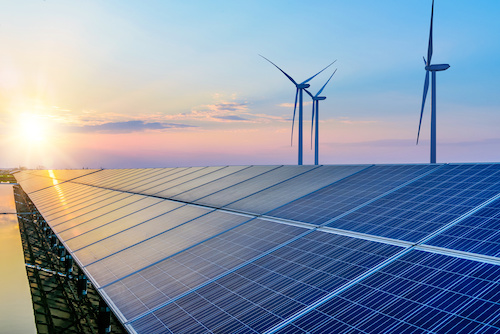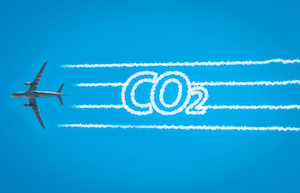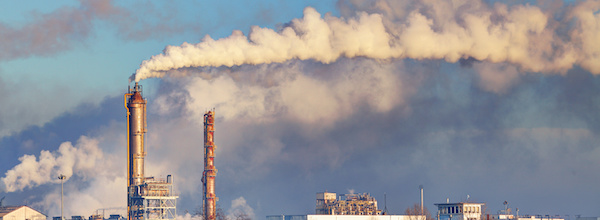What You Don't Know About CO2 Emissions
Global CO2 emissions hit an all-time high in 2019, drawing renewed attention to the need to change our habits or risk global catastrophe. While worldwide activism on this front is growing, the sad fact remains: We actually haven't made much progress when it comes to reducing emissions.
Much of the challenge lies in the fact that cutting emissions is no simple fix. With dedication from all parties, the solution is possible. But at the current rate, these changes may take decades - if not a full century - to fully reach the desired effect.
Even with the near-global effort to reduce CO2 emissions, positive results have been slow to appear so far. Why is this the case? And what can we do to reduce CO2 emissions once and for all?
Here is everything you need to know about where stand right now with the reduction of CO2 emissions - and where we can go from here.

Why it's taking so long to reduce CO2
Emissions are the unfortunate side product of virtually every manufacturing process, including cars, technology, medical devices, and countless other modern-day necessities. Eliminating emissions means eliminating modern life.
Even keeping track of emissions rates can be tricky. The UK, for example, has reduced its CO2 emissions by 38 percent since 1990. This figure, largely the result of a move away from coal, has been much touted by politicians and the media. Unfortunately, it's misleading. The emissions created by products consumed in the UK (but produced elsewhere) increased 19 percent between 1990 and 2005, and has likely risen since, especially given the growth of CO2 emissions in manufacturing countries like China.
The disparity between produced and consumed emissions has been called "creative carbon accounting" by climate activists, who aren't wrong to point out the deceptive calculations. While this particular problem may be a political one, the effects are borne by our planet and the 7 billion people who live in an increasingly uncertain climate future.
CO2 and CFCs: An uneasy alliance
In the current fight towards reducing CO2 emissions, another surprising factor is aerosols. Reducing the number of aerosols in the air feels like a target from a different age - specifically, the mid-20th century when the ozone hole dominated environmental media.
This depletion in our ozone layer is largely due to chlorofluorocarbons (CFCs), a byproduct of certain then-popular aerosol products like hairspray. A 1987 worldwide ban on CFCs in many products led to a reduction in the size of the ozone hole, which is now below its size in the 1950s.
However, while CFCs could spell disastrous for the long-term health of our atmosphere, they also have a surprising benefit that actually helps reduce atmospheric temperature in the short-term.
 Aerosols - in addition to affecting the ozone layer - create a cooling effect, slowing surface warming in ways that have only been recently studied. The effect of this cooldown is significant. When airplanes - a major source of aerosols - stopped flying for the week following 9/11, the temperature increased by up to 1.8 ° C (35.24 °F) throughout the United States.
Aerosols - in addition to affecting the ozone layer - create a cooling effect, slowing surface warming in ways that have only been recently studied. The effect of this cooldown is significant. When airplanes - a major source of aerosols - stopped flying for the week following 9/11, the temperature increased by up to 1.8 ° C (35.24 °F) throughout the United States.
Complicated facts such as these put climate activists in a double-bind. CFCs are undoubtedly harmful to the long-term health of the atmosphere, but if we eradicate them without a solid plan to simultaneously lower CO2 emissions, the results could prove disastrous.
Where do we go from here?
CO2 emission reduction has been a slow process. The solution requires serious legislative changes in some of our largest industries, like aviation, shipping, and manufacturing.
In a way, the solution to the carbon-aerosol conundrum in aviation has already been addressed, at least indirectly; consumers and governments see a huge value in relatively easy, cheap plane travel - thus, no changes are made. Any solution is expected to happen in due course of business.
Shipping companies - reckoning with their reputation as a major CO2 producer - have announced plans to create zero-emissions ships by 2030. Yet these promised policies aren't possible under current technological standards. Electric ships (which still aren't zero-emissions) can't travel the distances fuel-burning ships can. Moreover, the globalized shipping industry makes it difficult to identify which countries are responsible for emissions, due to some richer countries "outsourcing" their CO2 to poorer ones.

These are issues that can only be tackled through forthright legislation. Companies can announce expected dates of decarbonization, yet without a realistic, mandated policy for achieving them, we can't expect any change. Solutions toward tackling creative carbon accounting have existed since at least 1996, when the UN proposed eight solutions for better identifying the source country of emissions. None of them have been adopted.
Recognizing the need to reduce emissions in an increasingly complex, intertwined global economy is the first step. Eliminating emissions isn't step two, but rather a lodestar in a process of emissions reduction that is a challenge. What the future may hold for new emission-eliminating technology remains to be seen. It's what we can do here and now, through real political action, that will prepare us for a better future without eliminating our present.
Tibor Tarabek is Chief Data Officer at FUERGY, an AI-powered device that helps users optimize energy consumption and maximize energy efficiency.
FUERGY | fuergy.com
Author: Tibor Tarabek








